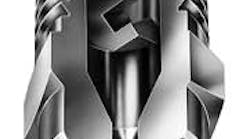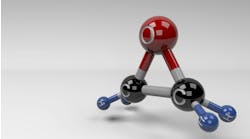Nozzle clogging is a frustrating problem, and it is easy to understand why.
A clogged nozzle cannot do its job because:
Coverage is impaired. A blocked orifice does not allow full spray angle formation.
Distribution is interrupted. The spray tends to get "lumpy" with heavy areas and voids.
Flow rates are reduced. With passages clogged, less liquid gets through the nozzle.
Droplet spectrum shifts. A clogged or partially clogged nozzle cannot create the desired droplet size.
Nozzles do not clog by themselves. The debris has to come from somewhere else in the process.
To deal with the problem, you can either make the debris go away or find a nozzle that can tolerate the debris.
A permanent solution usually involves a combination of both.
Removing the debris
The best approach to eliminating nozzle clogging is to remove the debris. If you can identify the material, you might be able to figure out its source.
My company once dealt with a customer who was using a group of air-atomizing nozzles. The air passages kept clogging. Through a simple investigation, the customer identified the material as rust flakes. That reminded him that he had no air dryer and that the piping was carbon steel. Water in the lines was rusting the pipe from the inside, finding its way to the nozzle. A dryer helped, but eventually he had to replace the piping. The problem then went away.
If you cannot eliminate the source of the debris, you might be able to capture it before it reaches the nozzles. This approach involves strainers, filters or some other separation method. Remember: Make sure you choose the right size mesh or capture medium.
The rule of thumb for selecting the degree of filtration is to keep in mind the size of the expected debris and the smallest-size nozzle on the system. The measurement you need for the nozzle is the "free passage" dimension. The filter should be able to capture anything larger than one-third the free passage. If the smallest free passage measurement is 0.090 inches (in.), the filter should be able to capture anything larger than 0.030 in.
If you do resort to filtration, make sure the filtration device is positioned appropriately. In one case I remember, a customer thought he was using appropriately sized and selected strainers. An analysis based on nozzle and debris size suggested everything should work. However, the nozzles clogged occasionally, especially after someone disturbed the piping. It turned out that small particles that would normally pass through the strainer and nozzle accumulated in the pipe. Over time, they agglomerated into a coating on the pipe walls.
Eventually, a chunk of coating could peel off the wall and clog a nozzle. The situation improved when the strainer was moved closer to the nozzles.
Before adding filtration, however, try to find "more tolerant" nozzles to mitigate the problem before you go overboard.
These two axial flat-fan nozzles have the same flow rate; however, the one on the left has a 15-degree spray angle, and the one on the right a 110-degree angle. Both could be listed in literature with the same "equivalent orifice," although their free passage measurements are very different.
Choosing a better design
The other main approach to solving clogging problems is to find a more suitable nozzle. First, evaluate the clog resistance of the current nozzle array. "Free passage" ," or "narrowest cross section" ," indicates the largest particle that can pass through the nozzle at its smallest point.
The normal assumption is that the particle is spherical. A nozzle must have a point at which it meters the flow, so a maximum theoretical open section exists for any design in that capacity. Much of the time ," but not always ," this section is the final orifice. Sometimes, the smallest point is at the inlet or somewhere inside. The debris might not be visible when you look into the nozzle's final orifice.
This information is not mentioned on every page of a nozzle catalog. If you do not see "free passage" listed specifically, you might see a measurement for the "orifice diameter." Often, this dimension also is the free passage, but not always. Do not be confused by the term "equivalent orifice." This measurement can be used to compare the flow rate of different nozzle configurations, but it can be very misleading if you are trying to evaluate clog resistance.
Defining terms
The free passage dimension is the clearest. You should know exactly what will fit through the nozzle when you have that figure.
Orifice diameter could help you if you know something about nozzle design. Frequently, it is as good a number as free passage if you know the orifice is, in fact, the smallest point. A catalog should provide this information in most cases.
Usually equivalent orifice diameter turns up only during discussions of axial flat-fan nozzles. Most of these nozzles have an elliptical orifice. If you look at a catalog chart, you will find manufacturers have the same flow rate available in various spray angles. Some customers make their own flow calculations based on orifice diameter, so the equivalent orifice is an attempt to make an approximation of the orifice if it were round. In virtually every case, free passage is smaller than this measurement, sometimes drastically smaller. Consequently, it is much safer to find the true free passage measurement.
Nozzle families have their own unique characteristics. If you understand these characteristics, you will be better able to find the most clog-resistant designs.
Flat fans
Standard axial designs.
These designs are called "mill and drill" designs. The orifice is formed through a milling process from the outside through to where a hemispherical hole has been drilled from the inside, forming an elliptical orifice. The size and severity of the ellipse determine the flow and spray angle.Narrow-angle nozzles are nearly round. Wide-angle nozzles are more of a slit. A 15-degree nozzle of a given flow rate will have a larger free passage than a 90-degree nozzle of the same flow rate. The minor axis of the ellipse is the real free-passage measurement for a nozzle such as this.
Some manufacturers will give you this actual measurement, but most do not. If you need to increase free passage, see if it is possible to use a narrower-angle nozzle.
Deflector designs.
These nozzles use a round orifice and spray against a deflection surface. The orifice diameter is the free passage. Some are narrow-angle designs, which generally are quite large and old-fashioned. They offer no particular advantage over more compact axial designs when the angle is below 40 degrees.On the other hand, wide-angle deflector nozzles ("flooding" nozzles) are quite compact and can offer a sizable increase in free passage over axial designs. However, they are tangential and will not replace axial designs directly. You might have to reconfigure your mounting, but they can help your problem.
Disc designs.
These designs are very old fashioned and have disappeared from some catalogs. The nozzle uses a "cat's eye and bow tie" orifice configuration that produces a decent-looking fan, although it is not as even as more standard axial designs. A round orifice provides high free passage for the flow, even in their wider-angle versions. The down side is the mounting, which requires cap and base holders and can get bulky. If you are able to tolerate the size, disc designs can be useful.
This cutaway illustrates an axial full-cone nozzle design, which uses a typical "X" style swirl insert.
Full cones
Trying to determine the free passage of a full-cone nozzle can be very difficult if the catalog does not spell it out specifically. Many designs are available, and little consistency exists between manufacturers.
Most full cones are axial designs and employ some kind of vane (spinner, swirl insert), which spins the liquid within the nozzle body. The centrifugal force of the spinning throws the liquid into a cone as it exits the orifice. Some helix (pigtail, spiral) designs use a long deflector surface to peel away the water column and form it into a cone. A few tangential inlet nozzles use that method to induce the spinning.
With standard axial designs, the vane generally is the smallest cross section. The nozzle will clog there before it will clog at the orifice. Consequently, nozzle designers strive to create a vane that has as large a free passage as the orifice. Such designs are available; however, an inverse relationship exists between free passage and the uniformity of distribution. Designs that boast high free passage measurements generally do poorly on uniformity.
The most extreme example of these phenomena is a helix design. Although helix designs rightfully claim high free passage, they do not create true full-cone distribution. They generate two or three concentric rings of liquid.
Other designs can have heavy centers or heavy edges, depending on the design approach. However, sometimes clog resistance is more important than distribution uniformity. If you need information about distribution, you will have to ask for it.
For small nozzles (generally less than 11/2-in. to 2-in. pipe connection), one of the best compromises is the "X" vane design. This design is available from several manufacturers and combines decent free passage with very good distribution. The design is available in a wide variety of angles and capacities so specific performance should be readily attainable.
If you are willing to make some design adjustments, tangential inlet full cones are available that offer excellent free passage and distribution combinations. The down side is the inlet configuration, which makes the cones hard to use with existing headers. They also tend to be expensive, and the capacity range is limited. However, if you can find what you want and make it work, it can be well worth the effort.
The key to full cone design is understanding what is ," and what is not ," the free passage measurement. Most of the time, it is not the final orifice diameter. If you are not sure and it is critical for your application, do not be shy about asking. The same goes for distribution uniformity.
This cutaway illustrates a tangential hollow-cone nozzle with no internal obstructions. The final orifice is the smallest point of the liquid path. This design provides the highest tolerance for debris possible for the flow rate.
Hollow cones
Generally, hollow cones are the easiest to deal with. In all but the smallest sizes, they are usually tangential designs with no vanes or other internal devices. Some that appear to be axial designs actually are disguised tangential nozzles. In most cases, the orifice is the free passage measurement.
The main, but not only, exception to the tangential rule is the helix design. This configuration adapts well to hollow- cone or full-cone designs. Helix designs meter the flow at the nozzle inlet. A column of liquid is forced into the cone, and the outermost layer of liquid is split off and deflected into the cone.
The free passage is the distance between the "threads" of the helix. It can clog if a piece of debris passes through the inlet, but cannot pass out between the threads. The result is a new deflection surface that will degrade the spray pattern drastically. The main cure is to make the helix longer, so the distance between the threads is equal to the inlet diameter. This solution increases the effective free passage at the expense of size and precision of the cone formation. Such modifications usually are spelled out in the manufacturer's literature.
Small hollow cones ," less than half an inch ," especially axial designs, can have complex internal designs that reduce free passage. Designs vary widely between manufacturers, so it is difficult to make generalizations. Bear in mind that the orifice diameter will not help.
Other designs
Air atomizers are difficult to generalize about because of their complex designs. You will have to figure out which design you need to get the job done and then live with that design. You will have to ask the manufacturer what the relevant free passage measurements are. Always remember to ask about air as well as liquid. Both sides can clog. From an operational standpoint, filtration is your best bet.
Conclusion
Prevention or resolution of a clogging problem is best accomplished as part of a cooperative effort between you and your nozzle supplier. Working together, you can configure the best combination of elements to minimize operational problems.
The problem can be solved in many ways. It is a matter of finding the best solution for your application.
Welander is engineering director with Lechler Inc., St. Charles, Ill. Contact him at (800) 777-2926.





